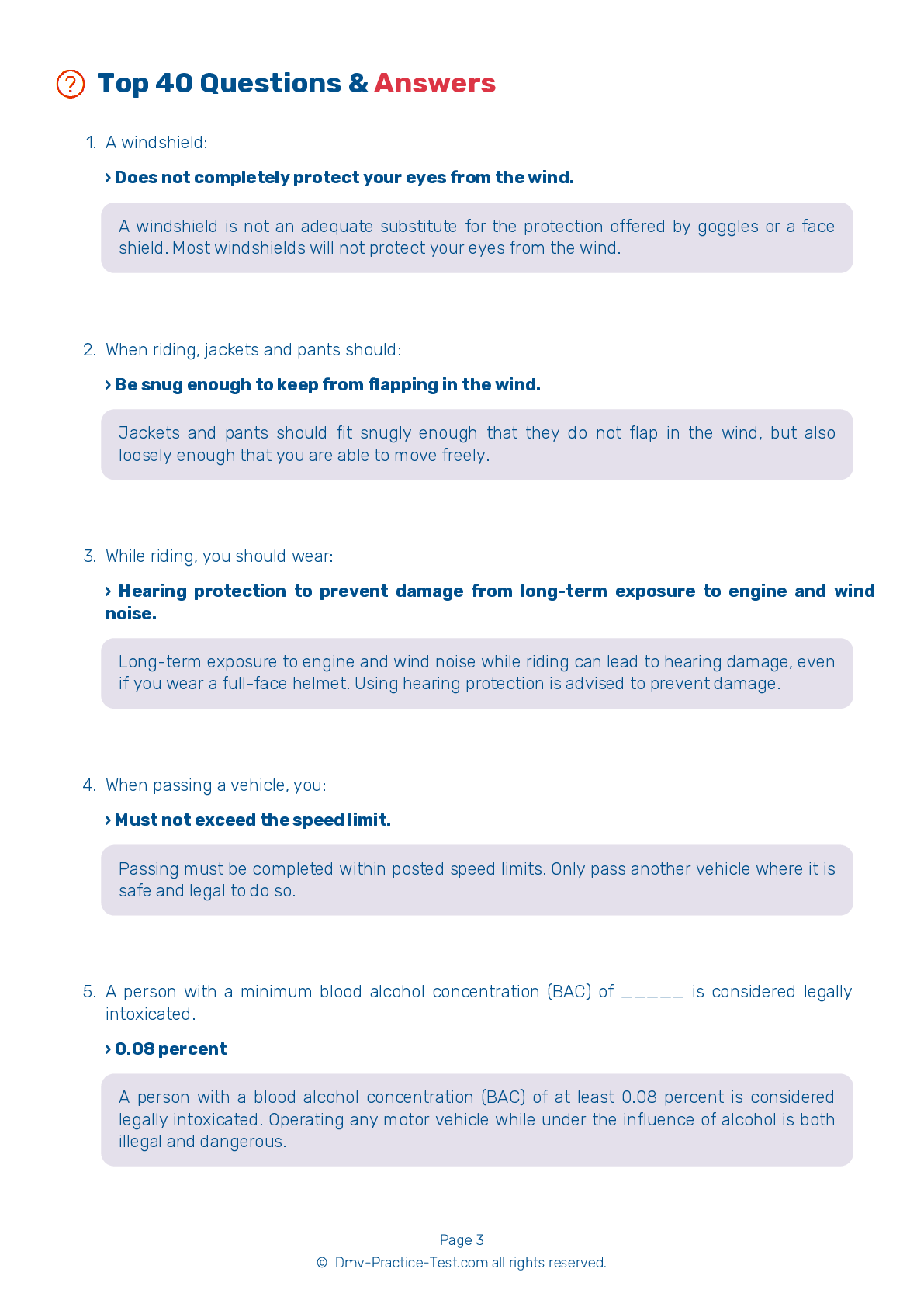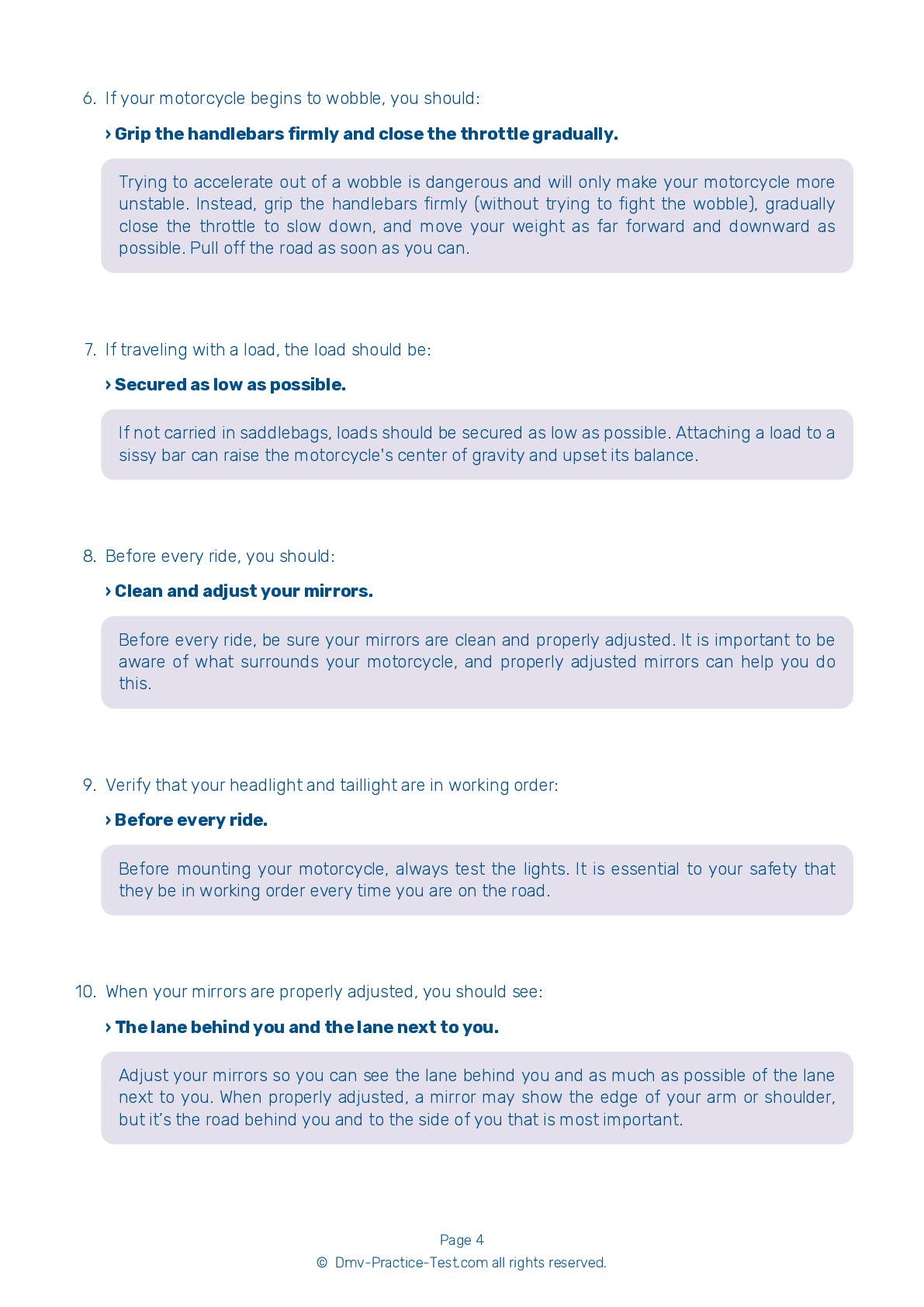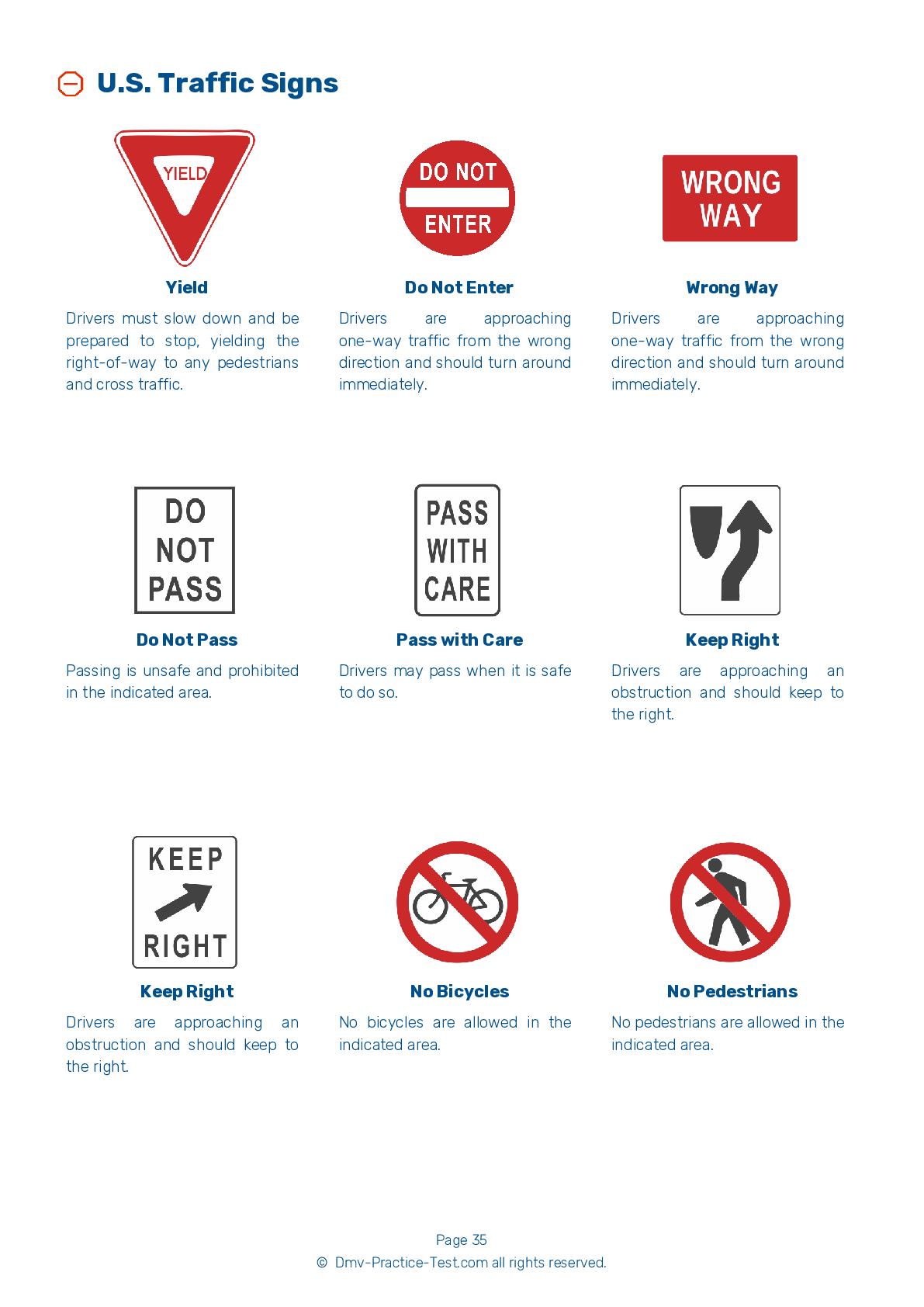Motorcycle Test | License OH 2025 | FREE Online Practice! #2 Page 5 of 5
Take this FREE motorcycle test (license in OH 2025) to check your knowledge of the road rules. To improve your results, download a motorcycle handbook online, study theory, and practice for free on our website. Still worried about how to get a motorcycle license in Ohio in 2025? Check our website for more sample tests, train as much as possible, and boost your grades!
33 . When parking a three-wheeled motorcycle on the side of the road, it should be:
Because of the limitations on mobility and motorcycle length, it is not practical to park your three-wheeled motorcycle on the side of a road at an angle with your rear wheel touching the curb, as you would with a two-wheeled motorcycle. Position your motorcycle in a parking space so you are parked parallel to the curb and set the parking brake.
34 . The best way to stop quickly is to:
If you need to stop quickly, apply both the front and rear brakes at the same time.
35 . To receive maximum protection, wear a helmet that is certified by the:
To get maximum protection, use a motorcycle helmet that meets U.S. Department of Transportation (DOT) standards.
36 . A “No standing” sign at a certain location means:
A "No standing" sign means that you may only make a temporary stop to load or discharge passengers.
37 . After entering a turn, you should roll on the throttle and:
Roll on the throttle through a turn to stabilize your suspension. Maintain a steady speed or accelerate gradually through the turn.
38 . As your motorcycle accelerates, you will need to:
As your motorcycle accelerates, you will need to shift into a higher gear.
39 . Maintaining a space cushion between your motorcycle and its surroundings is important because it:
The only way to be sure you will have enough time to react to mistakes made by other drivers is to leave plenty of space between you and the vehicles around you.
40 . Under normal conditions, you should maintain a following distance of at least:
In general, you should maintain a distance of at least two seconds between your motorcycle and the vehicle in front of you. Increase your following distance any time conditions are less than perfect.
See the exact questions that will be on the 2025 Ohio DMV exam.
99.2% of people who use the cheat sheet pass the FIRST TIME
Jeneen was tired of paying $5/gallon. She got herself a scooter that required the motorcycle license. She studyed the motorcycle test cheat sheet and passed her test the next day!
Christopher tells us how he knew nothing prior to obtaining the motorcycle study guide, and he only got one question wrong because he clicked on the wrong answer by mistake.



